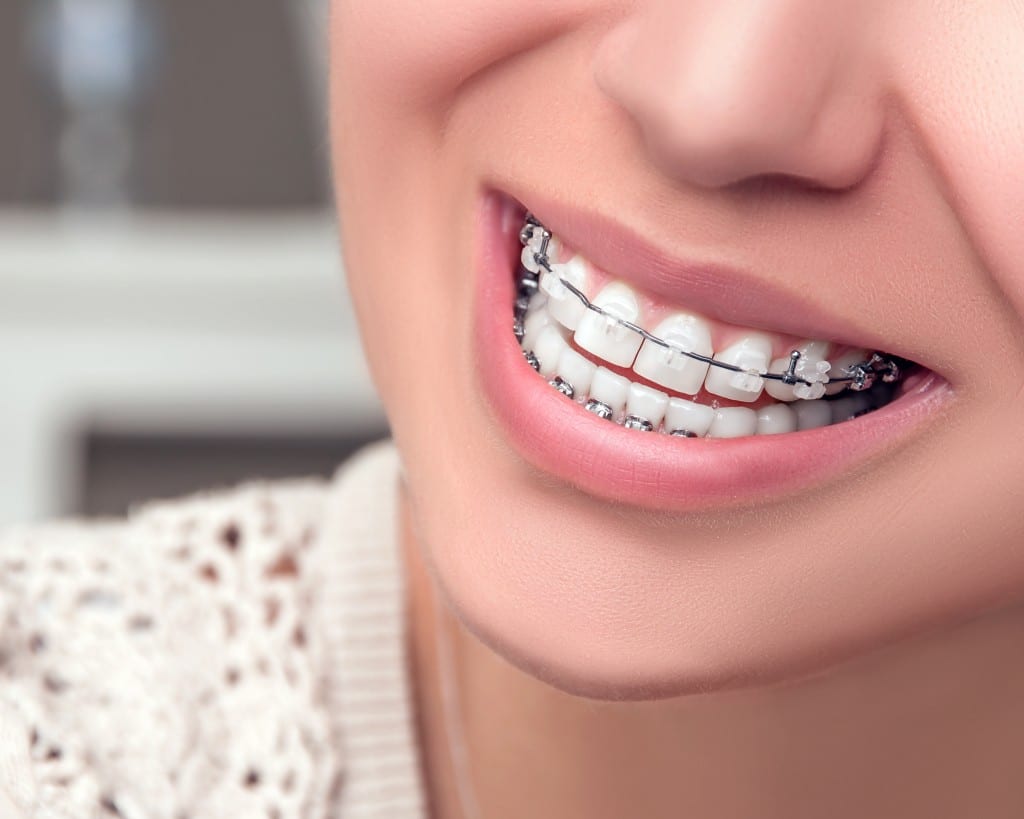If you or someone in your family is looking for straighter teeth, but don’t want visible braces, there are a few options to choose from. Both clear braces and Invisalign clear trays are less noticeable than traditional braces. Let’s take a closer look at clear braces and Invisalign, so you can decide which might be right for you.
What are Clear Braces?

What is Invisalign?
Invisalign, on the other hand, introduced a new type of orthodontic treatment with a virtually invisible approach. Instead of brackets and wires, Invisalign employs a series of clear, custom-made aligners. These aligners are worn over the teeth and gradually shift them into the desired position. Invisalign is known for its removable and discreet nature, providing a more flexible and comfortable experience compared to traditional braces.
Clear Braces vs Invisalign: Pros and Cons
If you’re wondering whether you should get clear braces or Invisalign, It’s helpful to look at the pros and cons of clear braces vs Invisalign side-by-side.
Clear Braces
Clear braces are an appealing option for many people of all ages. Since they use brackets and wires similar to traditional braces, they can be a more effective option for more obvious misalignments. Since the devices match the color of teeth, they’re harder to notice compared to traditional metal braces.
Pros:
- Aesthetic Appeal: Clear braces are less noticeable than traditional metal braces, making them a popular choice for individuals conscious about their appearance.
- Effectiveness: Clear braces are effective for treating various orthodontic issues, including moderate misalignments and bite problems.
Cons:
- Visibility: While less conspicuous, clear braces are still visible on the teeth, which might be a consideration for those seeking a more discreet option.
- Potential Discoloration: The elastic ties used with clear braces may stain or discolor over time, requiring periodic replacements.
Invisalign
Invisalign or other clear trays can also be a great option for older teens and adults. Invisalign and similar services are generally best for less serious adjustments. However, since they’re completely clear and made to fit your teeth exactly, they’re also much more difficult to notice.
Pros:
- Invisibility: The clear aligners are virtually invisible, providing a discreet orthodontic solution.
- Removability: Invisalign aligners are removable, allowing for easy cleaning, eating, and the occasional break for special occasions.
Cons:
- Compliance is Key: Success with Invisalign relies on consistent wear. Failure to wear the aligners as directed may impact the treatment outcome.
- Not Suitable for All Cases: Invisalign may not be suitable for severe orthodontic issues, and traditional braces might be recommended in such cases.
Should You Get Clear Braces or Invisalign?
Choosing between clear braces and Invisalign depends on a few different factors, including personal preferences, orthodontic needs, and lifestyle considerations. If you need more drastic dental adjustments and are comfortable with a fixed appliance, clear braces might be a suitable choice. On the other hand, if you value invisibility, flexibility, and the ability to remove your orthodontic device, Invisalign could be the ideal option.
Consider the following:
- Visibility Concerns: If minimizing the visibility of orthodontic treatment is crucial, Invisalign’s nearly invisible aligners might be the preferred choice.
- Treatment Complexity: For more complex orthodontic issues, clear braces may offer a comprehensive solution, whereas Invisalign is typically recommended for mild to moderate cases.
- Lifestyle Factors: Consider your daily routine and how well you can adhere to treatment requirements. Invisalign’s removability may be advantageous for those with active lifestyles or specific dietary preferences. However, if you think it will be difficult to wear Invisalign continuously, a fixed device might be better.
Ultimately, the decision between clear braces and Invisalign is personal. Consultation with an orthodontic professional is key to determining the most suitable option for your unique needs. Whether you opt for the subtle aesthetics of clear braces or the nearly invisible convenience of Invisalign, both methods can help you achieve a straighter, healthier smile. To learn more about clear braces or Invisalign, make an appointment with us today.
